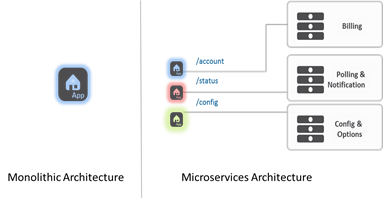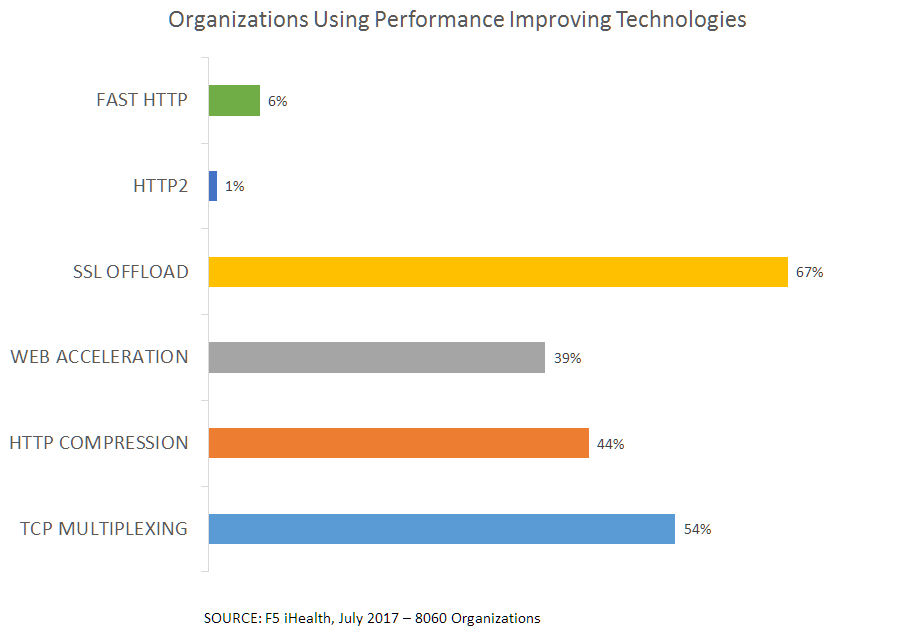Microdimensionamento do Data Center
O micromovimento está começando a tomar conta do data center, de dentro para fora. À medida que os desenvolvedores começam a adotar microsserviços para aplicativos, os arquitetos de rede estão analisando a microssegmentação na rede.

Há um movimento em andamento no desenvolvimento, especificamente no campo arquitetônico. Esse movimento é em direção aos microsserviços e se afasta das aplicações monolíticas do passado.
Com o suporte de tecnologias emergentes como conteinerização e nuvem, os microsserviços buscam melhorar a estabilidade, agilidade e escala ao decompor aplicativos em serviços menores e com foco local.
Simultaneamente, os arquitetos de rede estão se movendo na mesma direção, decompondo arquiteturas de rede monolíticas em domínios microssegmentados com maior conscientização de aplicativos. O objetivo deles? Para permitir estabilidade, agilidade e escala de serviços de rede essenciais para o sucesso em uma economia de aplicativos.
Juntos, esses micromovimentos estão mudando a face do data center, bifurcando-se em uma arquitetura de duas camadas projetada para agilidade, velocidade e confiabilidade.
Microsserviços

O que antes era um aplicativo web monolítico composto por milhares de linhas de código se torna um conjunto de microsserviços desacoplados, cada um consistindo em apenas centenas de linhas de código e focado em uma capacidade funcional específica.
Os microsserviços podem parecer, a princípio, apenas mais uma variação do tema SOA (Arquitetura Orientada a Serviços), que também pretendia dividir aplicativos monolíticos em serviços mais focados. Embora esse princípio fundamental permaneça verdadeiro, os microsserviços evitam a superestrutura complexa associada à SOA para permitir a evolução rápida e ágil dos serviços sem preocupação com longevidade ou dependências.
A implicação para a qualidade do desenvolvimento e o pipeline é notável, pois menos linhas de código são mais fáceis de solucionar problemas, manter e modificar de forma rápida.
Também tem impacto na arquitetura de rede e nos serviços necessários para fornecer microsserviços. É improvável que uma arquitetura de rede monolítica e de camada única forneça a velocidade operacional e a escala necessárias para dar suporte à entrega de centenas – ou milhares – de microsserviços.
MICROSEGMENTAÇÃO
Do outro lado do muro de TI, os arquitetos de rede estão simultaneamente repensando as premissas sobre as quais projetaram a rede. A nuvem e a mobilidade levaram a escalabilidade da rede ao seu limite e os microsserviços provavelmente serão a gota d'água. Uma nova abordagem é necessária, e essa abordagem é frequentemente chamada de microssegmentação.
Assim como os microsserviços, a microssegmentação é uma abordagem de arquitetura baseada em decomposição que divide os serviços de rede em componentes locais e mais gerenciáveis. Inicialmente proposta como um modelo de segurança melhor, a microssegmentação é totalmente apropriada para outros serviços de aplicativos, como balanceamento de carga, armazenamento em cache, aceleração e segurança de aplicativos.
Ao mover esses serviços física e logicamente para mais perto dos aplicativos (ou serviços) pelos quais eles são responsáveis por entregar, a arquitetura de rede se torna mais ágil e resiliente a mudanças, já que as mudanças são restritas localmente ao aplicativo ou serviço em questão.
ARQUITETURA DE DATA CENTER DE DUAS NÍVEIS
A combinação resultante de microsserviços e microssegmentação é efetivamente uma divisão na arquitetura do data center. Os principais serviços compartilhados permanecem na borda tradicional da rede, enquanto os serviços por aplicativo migram, puxados para dentro, em direção ao centro de gravidade do aplicativo. Serviços essenciais compartilhados, como acesso corporativo via SSL VPN, proteção de rede e aplicativos corporativos contra ataques DDoS e serviços semelhantes servirão como a espinha dorsal dessa nova arquitetura de duas camadas. Serviços por aplicativo, como cache, balanceamento de carga e segurança de aplicativos, preencherão a segunda camada da arquitetura do data center.

A infraestrutura por aplicativo (ou por serviço) permite maior acoplamento lógico de serviços com os aplicativos que eles entregam e, quando implantada em um software ou fator de forma virtual, permite maior agilidade e controle em todo o ciclo de vida do aplicativo ou serviço. Isso é cada vez mais importante em um ambiente onde os microsserviços podem ter uma vida útil de apenas alguns meses, já que os serviços por aplicativo devem ser configurados e desmontados com igual presteza.
Esses serviços por aplicativo serão implantados usando uma abordagem de microssegmentação, com políticas granulares que regem domínios menores e focados de escalabilidade e segurança com base na responsabilidade por um determinado microsserviço ou conjunto de microsserviços relacionados.
O micromovimento está apenas engatinhando, mas está ganhando velocidade rapidamente à medida que organizações nascidas na nuvem e aquelas com arquiteturas de rede grandes, complexas e muitas vezes difíceis de manejar buscam novas maneiras de simplificar e dimensionar os serviços necessários para o sucesso.
Microsserviços e microssegmentação alinham a arquitetura de aplicativos e de rede de uma forma que permite que ambos dimensionem e acelerem simultaneamente a entrega de aplicativos essenciais para o sucesso em um mundo de aplicativos.
